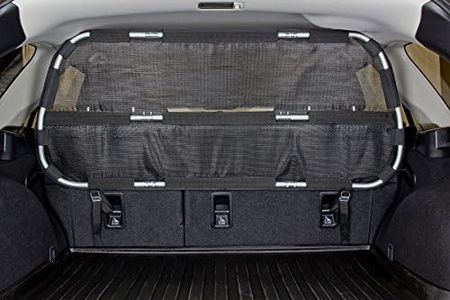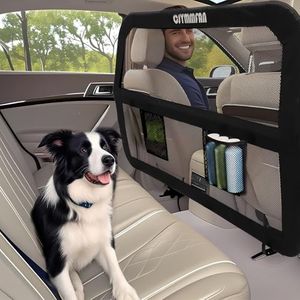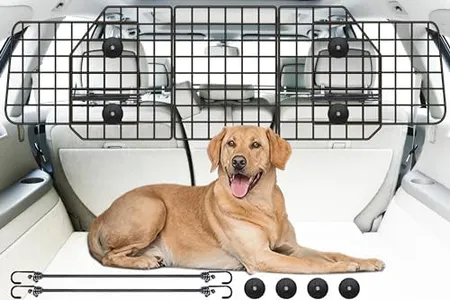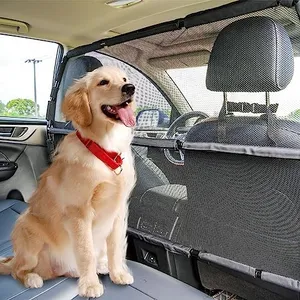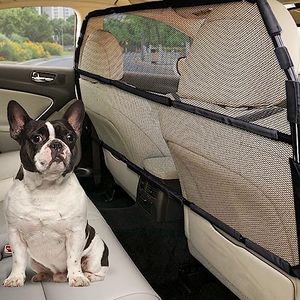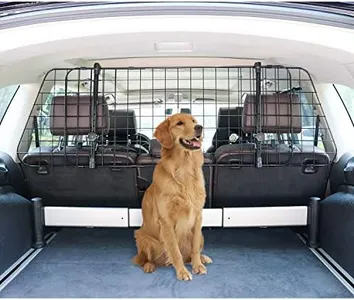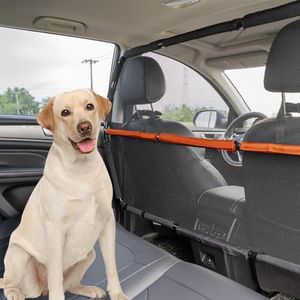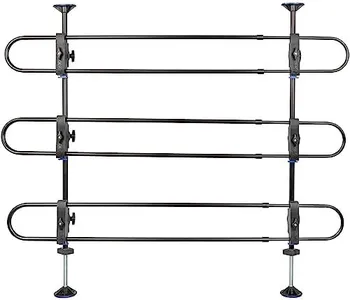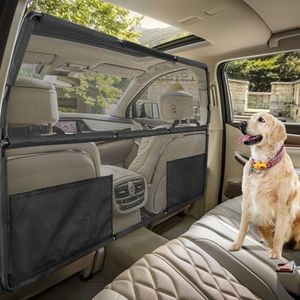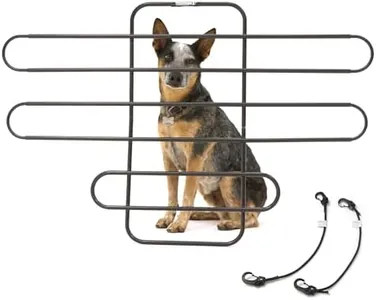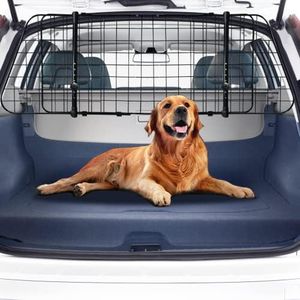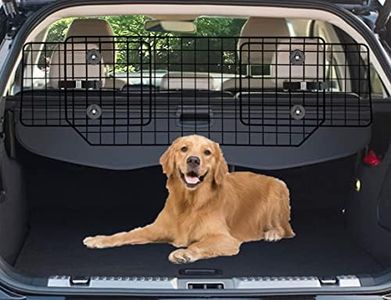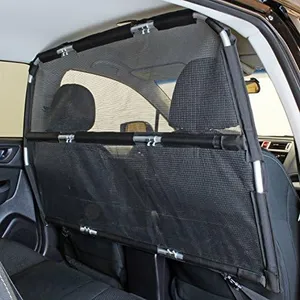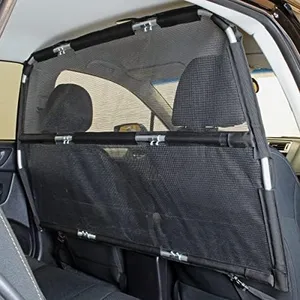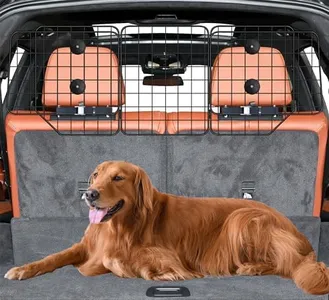We Use CookiesWe use cookies to enhance the security, performance,
functionality and for analytical and promotional activities. By continuing to browse this site you
are agreeing to our privacy policy
10 Best Dog Car Barriers
From leading brands and best sellers available on the web.Buying Guide for the Best Dog Car Barriers
When shopping for a dog car barrier, it’s important to ensure your pet’s safety and comfort while driving. A well-chosen barrier keeps your dog secure in a designated area, reducing distractions and the risk of injury in case of sudden stops. There are different styles to choose from, like mesh, metal, or netting, each suiting various car types and pet sizes. Focus on finding one that suits your vehicle type and fits your dog’s behavior, whether they are calm or particularly energetic. Proper installation is key, so consider how easy it is to set up and whether it can be removed if needed.Material and Build QualityThe material of the barrier is crucial for both security and longevity. Barriers typically come in metal, plastic, or mesh/fabric. Metal barriers are sturdy and ideal for larger or more active dogs as they withstand digging and chewing, but they can be heavier and a bit more complicated to install. Plastic or fabric barriers are lighter and easier to install or remove, but may not hold up as well against determined pets. Consider your dog’s size and temperament—go with tougher material for large or persistent dogs, and lighter materials for smaller, calm pets.
Size and AdjustabilityThe size of the barrier determines how well it fits your specific vehicle and how effectively it contains your pet. Some barriers are universally adjustable, while others come in fixed sizes or are designed for specific car types like SUVs, sedans, or hatchbacks. Adjustable barriers are a good choice if you may change vehicles or want flexibility, while fitted options typically offer a sleeker look and more secure fit. Measure your car’s interior and consider your dog’s height to choose a size that creates a secure, comfortable space without pinching or leaving gaps where your dog could squeeze through.
Ease of InstallationHow easy the barrier is to install and remove can impact how often you use it and how securely it fits. Some barriers use tension rods, suction cups, or straps, each with their own setup demands. Quick-install barriers are ideal for those who need flexibility (perhaps if the car is shared) or want to set up the barrier only when the dog is on board, whereas sturdier, bolted options are better for a permanent solution. Assess how often you’ll need to install or remove the barrier to pick one that fits your routine.
Visibility and AirflowA good barrier should let your dog see you and provide adequate airflow. Mesh or netted barriers generally allow better visibility and ventilation, keeping your dog relaxed and comfortable, which is ideal for sociable or anxious pets. Solid or metal barriers may feel more secure but could limit visibility and airflow, which might not suit dogs that like to stay in close visual contact with their owner. Think about your dog's anxiety level and the climate in which you usually drive to help you choose.
Compatibility with Vehicle TypeNot all barriers fit every car. Some are designed for SUVs or wagons, while others suit sedans or hatchbacks. Before buying, check that the barrier is compatible with your make and model, especially if your car has unique features like curved roofs or adjustable headrests. If you expect to use the barrier in multiple vehicles, look for universal-fit models that can adapt to different interiors. Consider whether you’ll use it behind the front seats, rear seats, or the cargo area.
